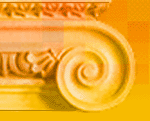3:46 p.m. Thursday, May 12, 2011 WASHINGTON
— Who's better at teaching difficult physics to a class of more than 250 college students: the highly rated veteran
professor using time-tested lecturing, or the inexperienced graduate students interacting with kids via devices that look
like TV remotes? The answer could rattle ivy on college walls.
A study by a Nobel Prize-winning physicist, now a science
adviser to President Barack Obama, suggests that how you teach is more important than who does the teaching.
He found
that in nearly identical classes, Canadian college students learned a lot more from teaching assistants using interactive
tools than they did from a veteran professor giving a traditional lecture. The students who had to engage interactively using
the TV remote-like devices scored about twice as high on a test compared to those who heard the normal lecture, according
to a study published Thursday in the journal Science.
The interactive method had almost no lecturing. It involved short,
small-group discussions, in-class "clicker" quizzes, demonstrations and question-answer sessions. The teachers got
real-time graphic feedback on what the students were learning and what they weren't getting.
"It's really
what's going on in the students' minds rather than who is instructing them," said lead researcher Carl Wieman
of the University of British Columbia, who shared a Nobel physics prize in 2001. "This is clearly more effective learning.
Everybody should be doing this. ... You're practicing bad teaching if you are not doing this."
The study compared
just two sections of physics classes for just one week, but Wieman said the technique would work for other sciences as well,
and even for history.
Previous research has produced similar results. But this study, appearing in a major scientific
journal and written by a Nobel laureate, can make a big difference in the field of teaching science, said Robert Beichner,
a physicist and professor of science education at North Carolina State University. Beichner, who was named the 2010 U.S. undergraduate
science professor of the year by the Society for College Science Teachers, wasn't part of the study but praised Wieman's
work.
"He's got the scientific chops" to make other professors consider retooling their approaches, Beichner
said.
Wieman heads the science education programs at both the University of British Columbia and the University of Colorado.
He's also associate director in the White House Office of Science and Technology Policy.
Lloyd Armstrong, a former
provost at the University of Southern California and professor of physics and education, agreed that the study shows "it's
not the professor, it's not even the technology, it's the approach."
Beichner, who uses the more hands-on
method himself, likened it to the difference between being told how to ride a bike vs. getting on and riding it.
A prominent
proponent of the traditional physics teaching method declined to talk about the study. Walter Lewin of MIT wrote in an email,
"I have a rather unique lecture style which they could not cover in their tests."
In the spring 2010 experiment,
Wieman and his colleagues followed two nearly identical physics classes of more than 250 students that were taught the usual
way three hours a week for 11 weeks. In the 12th week, one class stuck with the long-tenured and well-regarded professor in
lecture mode. The second class was taught by two of Wieman's grad students using the interactive method.
The classes'
test scores were nearly identical before the interactive sessions, but there was an obvious difference after the students
took a 12-question quiz on what they were taught during the experimental week of instruction. Students in the interactive
class got an average of 74 percent of the questions right, while those taught using traditional method scored only 41 percent.
The
best scores in the traditional class were below average for the interactive class, Wieman said. In addition, student attendance
and attention were higher in the interactive class.
The professor who lectured students had been sure his method would
work better, and it took a while for him to get over the results, said Louis Deslauriers, one of the graduate students who
taught the interactive class. But now the professor is striving to adopt the new method.
The two graduate students are
co-authors of the study and knew that what they were doing was part of the research, meaning this wasn't the usual blind
scientific experiment. But Wieman said that didn't affect the results of the study. Independent people monitored the students
and teachers' actions in the classroom. Wieman declined to identify the veteran professor, who was a willing participant.
Wieman
said the need for a more hands-on teaching approach isn't an indictment of a generation raised on video games. It has
more to do with the way the brain learns, he said. This method has long worked well in individual tutoring; it's just
now being applied on a grander scale, he said.
As far as professorial brilliance, there's "nothing magical
about a particular person," he said.
"Lectures have been equally ineffective for centuries," the Nobelist
said. "Now we have figured out ways to do it better."
___
Online: http://www.sciencemag.org
___
May
12, 2011 03:46 PM EDT

